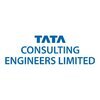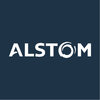Filter interviews by
Sam India Built Well Environmental Specialist Interview Questions and Answers
Sam India Built Well Environmental Specialist Interview Experiences
1 interview found
(1 Question)
- Q1. Environment health and safety
Top trending discussions






Interview questions from similar companies

It was just a aptitude test
(2 Questions)
- Q1. Basic regarding professional area
- Q2. Project worked at and experienced
- Ans.
Managed a team to implement a new customer relationship management system
Led a team of 5 employees to successfully implement a new CRM system
Coordinated with IT department to ensure smooth integration of the system
Provided training to staff on how to use the new system effectively
(2 Questions)
- Q1. Why i want to join the firm
- Ans.
I want to join the firm because of its strong reputation, opportunities for growth, and alignment with my career goals.
Strong reputation in the industry
Opportunities for career growth and development
Alignment with my career goals and values
- Q2. Salary discussions

I applied via Approached by Company and was interviewed before Apr 2021. There was 1 interview round.
(2 Questions)
- Q1. Equipment layout details
- Q2. Plot plan details and man and material movement path
Interview Preparation Tips
Equipment layout preparation as per oisd 118 and plot plan knowledge required.

I applied via Approached by Company and was interviewed in Jul 2024. There was 1 interview round.
(2 Questions)
- Q1. Major difference between Hrg and Lrg?
- Ans.
HRG stands for Human Resource Group while LRG stands for Large Retail Group.
HRG focuses on managing human resources within an organization
LRG focuses on managing a large retail business
HRG deals with employee relations, recruitment, training, and development
LRG deals with sales, inventory management, customer service, and marketing
- Q2. How to perform transformer sizing
- Ans.
Transformer sizing involves calculating the appropriate size of a transformer based on load requirements.
Determine the total load requirements in kVA
Consider the load factor and diversity factor
Calculate the transformer size based on the total load requirements
Ensure the transformer is rated for the appropriate voltage and frequency
Consult with a professional engineer if needed

I applied via Recruitment Consulltant and was interviewed in Nov 2022. There were 3 interview rounds.

(4 Questions)
- Q1. Salary slip and bank statement
- Q2. Before salary and after salary slip
- Q3. Experience letter and education certificate
- Q4. Salary discussion with you
(3 Questions)
- Q1. Welding related questions
- Q2. Ndt related questions RT UT PWHT
- Q3. P91 Questions about the
Interview Preparation Tips


(3 Questions)
- Q1. Tell me about yourself
- Q2. What you do daily
- Q3. What is your package

(3 Questions)
- Q1. Good technology skill and preparation
- Q2. Tell me about your self
- Q3. Tell me about your family
Interview Preparation Tips


(1 Question)
- Q1. Only design related queries
(1 Question)
- Q1. Only salary package discussed
Interview Preparation Tips


(4 Questions)
- Q1. How to design floating head assembly From pds
- Ans.
Designing a floating head assembly involves considering various factors such as material selection, sealing mechanisms, and thermal expansion.
Select appropriate materials for the floating head assembly based on the application requirements.
Design effective sealing mechanisms to prevent leakage and ensure proper functioning.
Consider thermal expansion and contraction to accommodate temperature variations.
Ensure proper al...
- Q2. H2s service for pressure vessel
- Ans.
H2S service for pressure vessel refers to the use of hydrogen sulfide in a pressure vessel.
H2S service involves the handling and containment of hydrogen sulfide gas in a pressure vessel.
Pressure vessels used in H2S service must be designed and constructed to withstand the corrosive effects of hydrogen sulfide.
Special materials and coatings may be required to prevent hydrogen sulfide from corroding the pressure vessel.
R...
- Q3. Different types of gasket
- Ans.
Gaskets are mechanical seals used to prevent leakage between two surfaces. There are various types of gaskets available.
Sheet gaskets
Spiral wound gaskets
Ring gaskets
Metallic gaskets
Rubber gaskets
Cork gaskets
Non-asbestos gaskets
- Q4. Kamprofile and SpWd as per Asme
Interview Preparation Tips
Skills evaluated in this interview

I applied via Approached by Company and was interviewed before Jul 2021. There were 3 interview rounds.

(3 Questions)
- Q1. What is your qualification
- Q2. How much experience
- Q3. What is your current CTC
(2 Questions)
- Q1. How to calculate earthwork quantity
- Ans.
Earthwork quantity can be calculated by using the formula: Volume = Area x Depth
Calculate the area of the earthwork site (length x width)
Determine the depth of excavation or fill required
Multiply the area by the depth to get the volume of earthwork
Consider any slopes or irregular shapes in the calculation
Use software like AutoCAD or Excel for accurate calculations
- Q2. How to calculate re wall quantity and rate
- Ans.
To calculate re wall quantity and rate, measure the area of the wall and determine the cost per unit area.
Measure the length and height of the wall to calculate the area in square feet or square meters.
Determine the cost per unit area by dividing the total cost of materials and labor by the total area of the wall.
Multiply the area of the wall by the cost per unit area to calculate the total cost of the wall.
Example: If...
Sam India Built Well Interview FAQs
Tell us how to improve this page.
Sam India Built Well Interviews By Designations
- Sam India Built Well QA QC Engineer Interview Questions
- Sam India Built Well Electrical Site Engineer Interview Questions
- Sam India Built Well Paramedic Interview Questions
- Sam India Built Well Senior Engineer Interview Questions
- Sam India Built Well Environmental Specialist Interview Questions
- Sam India Built Well Survey Engineer Interview Questions
- Sam India Built Well Architect Interior Designer Interview Questions
- Sam India Built Well Site Engineer Interview Questions
- Show more
Interview Questions for Popular Designations
- Environmental Engineer Interview Questions
- Environmental Officer Interview Questions
- Environmental Health and Safety Lead Interview Questions
- Environmental Health and Safety Manager Interview Questions
- Environment Health and Safety Officer Interview Questions
- Environmental Chemist Interview Questions
- Manager Environment Interview Questions
- Assistant Environment Health and Safety Manager Interview Questions
- Show more
Sam India Built Well Environmental Specialist Interview Process
based on 1 interview
Interview experience
Interview Questions from Similar Companies
|
Civil Site Engineer
55
salaries
| ₹1.8 L/yr - ₹5.4 L/yr |
|
Civil Engineer
43
salaries
| ₹1.6 L/yr - ₹5 L/yr |
|
Safety Officer
28
salaries
| ₹1.8 L/yr - ₹4.9 L/yr |
|
Site Engineer
21
salaries
| ₹2.4 L/yr - ₹6 L/yr |
|
Senior Engineer
19
salaries
| ₹5.4 L/yr - ₹10.5 L/yr |

Megha Engineering & Infrastructures

Shapoorji Pallonji Group

Alstom Transportation

Tata Technologies
- Home >
- Interviews >
- Sam India Built Well Interview Questions >
- Sam India Built Well Environmental Specialist Interview Questions







